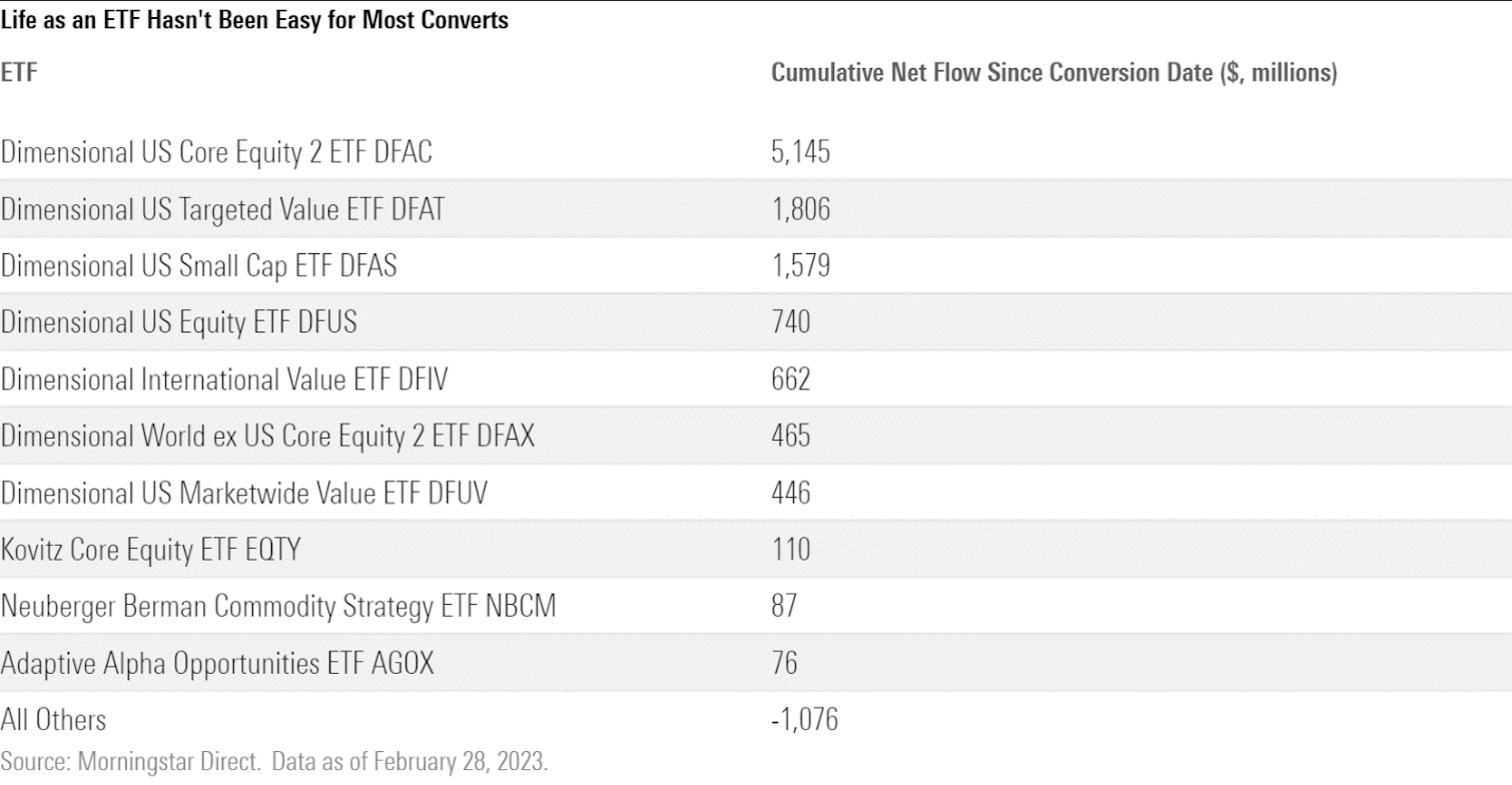Accessing ETFs is somewhat easier and cheaper. They're available to just about every investor with a brokerage account, and they typically don't levy 12b-1 fees. Smaller mutual funds likely have more to gain from the greater accessibility as it could help struggling funds grow larger, increasing the likelihood that they stick around. Smaller funds are also less likely to be those offered through 401(k) plans.
Mutual fund providers have some trade-offs to consider when moving to the ETF structure, whether that's through a conversion or some other means. Mutual funds provide managers with a way to ward off threats to a fund's capacity, or the amount of money they can handle without ruining their performance edge. They can turn down new investors as a fund grows bigger and its ability to outperform a benchmark erodes. Converting to an ETF forfeits that option because ETFs don't possess a mechanism to prevent new money from entering. Mutual funds that hold a wide universe of stocks, bonds, or other assets can handle larger sums of money, strengthening their case for conversion to an ETF.
Mutual funds offer another small advantage to some active managers. ETFs must disclose their holdings every day, while mutual funds show their cards only once per quarter. Some active managers may not be comfortable disclosing their positions daily, so they may opt to stay with the mutual fund structure. Nontransparent ETFs are a potential route around daily disclosures, but none of the converted ETFs have chosen to go down that road.
That framework helps inform the reasoning behind many of the ETF conversions from the past two years. Dimensional earns king-of-the-hill status for most funds and dollars converted. It converted seven mutual funds between mid-2021 and mid-2022 that collectively represented more than $44 billion. All seven were tax-managed mutual funds aimed at taxable accounts, so switching to a more tax-efficient vehicle made sense. All of these mutual funds were among the most broadly diversified in their respective Morningstar Category, meaning they can put new money to work in a wide range of stocks without threatening their long-term edge. Dimensional also works exclusively with a close-knit network of advisors and institutions to reach their clients, so none of these funds charged 12b-1 fees. Given this unique set of circumstances, Dimensional's seven mutual funds were ideal candidates.
Four mutual funds from J.P. Morgan, with a combined $8.3 billion in assets, slotted in second place behind Dimensional. Unlike Dimensional’s mutual funds, all of the J.P. Morgan funds had share classes that charged 12b-1 fees, which they dropped after adopting the ETF structure. J.P. Morgan uses these funds as part of its SmartRetirement target-date series, so the firm has more control over the assets in these funds compared with others that are distributed across a wider investor base.
Outside of those 11 funds, Morningstar has confirmed an additional 28 mutual funds that have successfully made the jump to the ETF structure. They come from a variety of fund providers across a wide range of strategies. All are actively managed, and most are smaller in terms of the amount of money they oversee. The median size of these 28 remaining funds was about $40 million at the time they converted.



